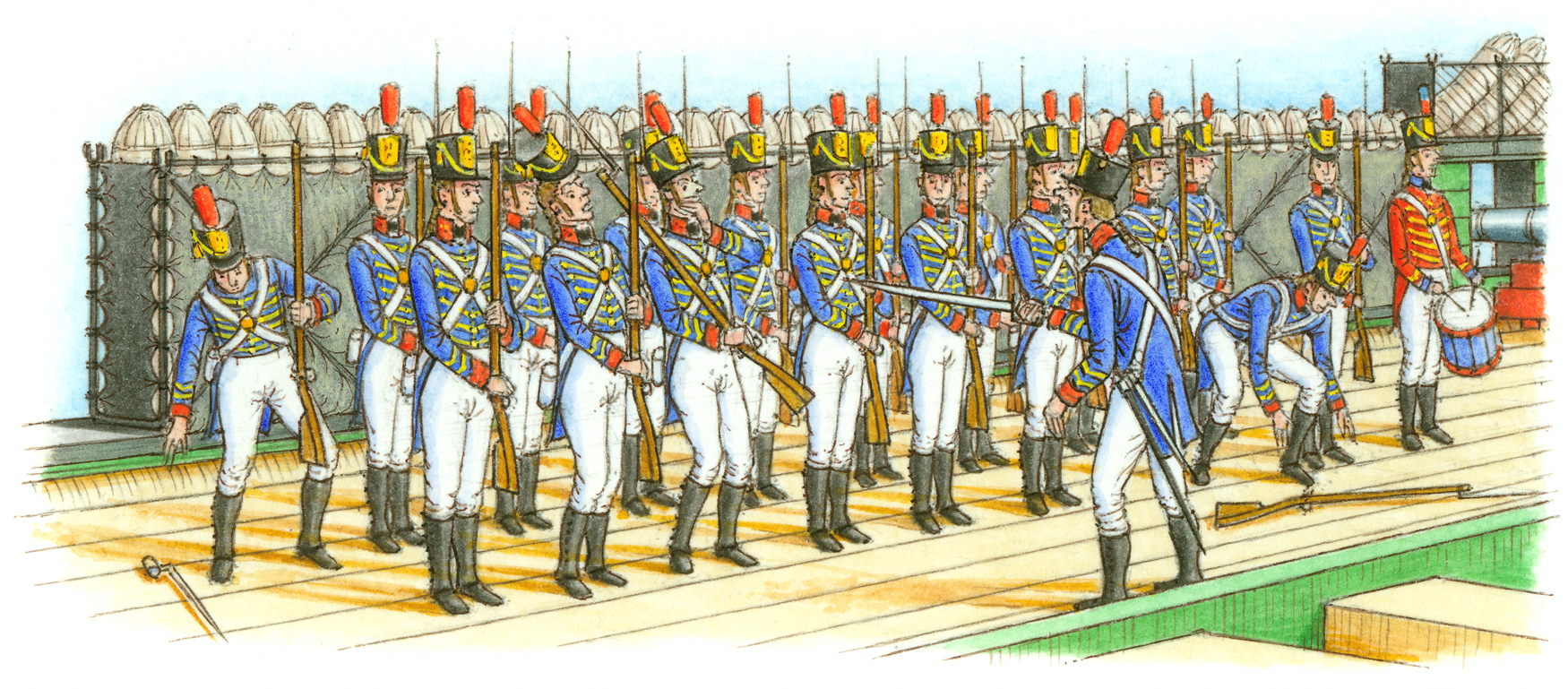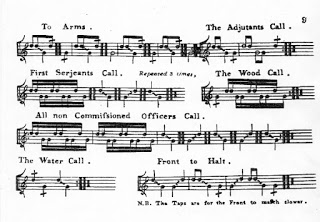So many of the details of life in the early U.S. Navy remain elusive. As we dig ever deeper into archival sources, we begin to gain a better understanding of the minutiae of life at sea in the period. And yet some details of that world were so commonplace to the men who lived them every day that no one bothered to record them for posterity.
We received an inquiry wondering about the tune used to call the crew to their “quarters” or battle stations. Most early nineteenth century accounts of battle simply mentioned that a ship “beat to quarters.” This, of course, implies that a drum was used–other instruments don’t “beat,” after all.
Several sources provide confirmation. In the wake of the USS Chesapeake’s ignominious encounter with HMS Leopard in 1807, the American ship’s officers appeared as witnesses at the court martial of Commodore James Barron, whose indecision resulted in the British forcibly removing several seamen from the American ship. Part of the proceedings focused on Barron’s failure to call his men to their battle stations. The court addressed Lieutenant John Orde Creighton, Chesapeake’s fourth lieutenant at the time of the incident, with the following question: “What was the usual mode of getting the crew to quarters in this ship before this period? And what has been the manner generally practiced [sic] in the American navy, as far as you have observed in it?”
Creighton answered: “The usual way on board this ship and all others where I have been, has been to beat to quarters. If they have no drum however, or the drummer is incapable of doing his duty, the boatswain pipes all hands to quarters.”1
As late as 1852, the U.S. Navy’s manual for preparing ships for battle agreed: “A ship’s company may be called to quarters by beat of drum, or by call of the Boatswain and his Mates; but the first mode is to be always used when practicable.”2

Luckily, the answer comes in the form of a book by U.S. Marine Drum Major Charles Stewart Ashworth.
We don’t know much about Ashworth’s life, but he was evidently a skilled musician and instructor. In January 1812, he published a book called A New, Useful, and Complete System of Drum Beating… intended particularly for the United States Army and Navy. Since the musicians on board ship were in fact Marines, it stands to reason that the call he notated in his book was the one in current use.

Music historian James Krause has recorded what this would have sounded like when accompanied by a fife–and all the American frigates carried a Marine drummer and fifer.
1 Navy Department, Proceedings of the General Court Martial Convened for the Trial of Commodore James Barron (James Gideon, 1822), 70.
2 Navy Department, Instructions in Relation to the Preparation of Vessels of War for Battle (Washington: C. Alexander, 1852), 32.
The Author(s)
Matthew Brenckle
Research Historian, USS Constitution Museum
Matthew Brenckle was the Research Historian at the USS Constitution Museum from 2006 to 2016.